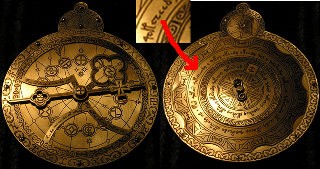I’ve often wondered what Lynn Thorndike thought of the Voynich Manuscript: after all, he (his first name came from the town of Lynn, Massachusetts) lived from 1882 to 1965, and continued to publish long after his retirement in 1950, and so was active before, during and after the 1920s when Wilfrid Voynich’s cipher manuscript mania/hype was at its peak. As a well-known writer on alchemy, magic and science, my guess is that Thorndike would surely have been one of those distinguished American academics and historians whom Voynich tried so hard to court after his move from Europe to New York.
One of my ongoing projects is to work my way through all of Thorndike’s works, as it seems to me that his science/magic research programme carved a trail through the jungle of mostly-unread proto-scientific manuscripts that probably falls close to where the Voynich Manuscript is situated: and few historians since him have felt any pressing need to build on his work except in generally quite specific ways. All of which is why I happened to be reading Chapter VII “Nicholas of Cusa and the Triple Motion of the Earth” in Thorndike’s “Science & Thought in the Fifteenth Century” (1929).
Firstly, you need to understand that Thorndike thought that the whole Burckhardtian notion of the (supposedly fabulous and extraordinary) Renaissance was plain ridiculous: there were countless examples of ingenuity, invention, and insight throughout the Middle Ages (and, indeed, throughout all history) to be found, if you just bothered to take the time and effort to place events and writings within their own context.
Furthermore, Thorndike believed that lazy historians, having set up this false opposition between (high) Renaissance culture and (low) medieval scholasticism, then went looking for exceptional individuals who somehow bucked that trend, “forerunners, predictors, or martyrs of the glorious age of modern science that was to come.” (p.133) The list of usual suspects Thorndike suggests – “Roger Bacon, Nicholas of Cusa, Peurbach and Regiomontanus, Leonardo da Vinci” – appears to me not far from how the fake table of Priory of Sion Grand Masters would have looked, if Pierre Plantard been a tad more receptive to non-French history.
Of course, Thorndike – being Thorndike – then goes on to demonstrate precisely how the whole myth around Nicholas of Cusa arose: basically, German historians looking out for a German ‘forerunner, predictor, or martyr‘ plucked three marginal fragments from Nicholas’s work and wove them together to tell a story that was, frankly, not there to be told. Then you can almost feel the fever rising in Thorndike’s genuinely angry brow when he continues:
“Could anything, even the most childish of medieval superstitions, be more unscientific, unhistorical, and lacking in common sense than this absurd misappreciation and acceptation of inadequate evidence, not to say outright misrepresentation, by modern investigators and historians of science?” (p.137)
Punchy (and grouchy) stuff: but he’s far from finished yet. He has an example of something even more scandalous which he feels compelled to share with us:-
“When are we ever going to come out of it? To stop approaching the study of medieval science by such occult methods as the scrutiny of a manuscript supposed to have been written by Roger Bacon in cipher, instead of by reading the numerous scientific manuscripts that are expressed in straightforward and coherent, albeit somewhat abbreviated, Latin?” (p.137)
So there you have it. In 1929, while Wilfrid Voynich was still alive, Thorndike took a measured look at Voynich’s and Newbold’s “Roger Bacon Manuscript” nonsense, and placed it straight in the category of “absurd misappreciation and acceptation of inadequate evidence, not to say outright misrepresentation“.
John Manly may have been more dismissive of Newboldian cryptography in his article in Speculum 6 (July 1931), but Thorndike was no less dismissive of Newboldian history in print in 1929. Just so you know!
